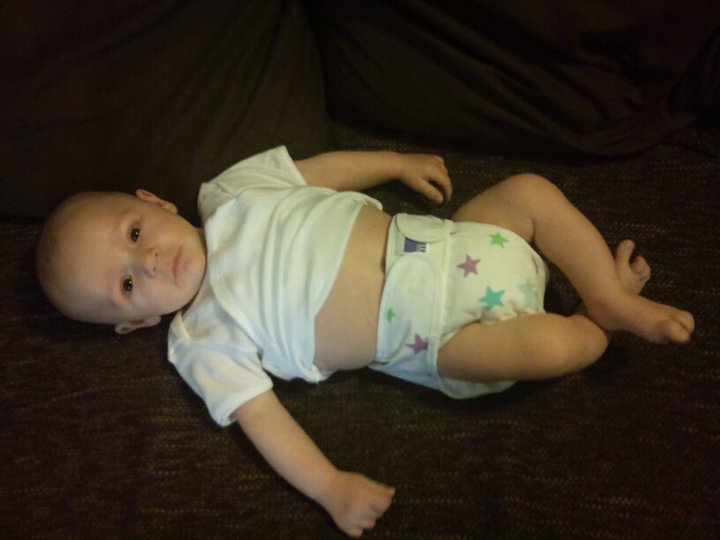> Gone are the days of using safety pins and plastic covers to secure a bulky cloth nappy on your baby. Cloth nappies, also known as reusable nappies, have come a long way over the
Gone are the days of using safety pins and plastic covers to secure a bulky cloth nappy on your baby. Cloth nappies, also known as reusable nappies, have come a long way over the years. They are quite comparable to disposable, or single-use, nappies as far as convenience, comfort, and leak protection. Before making your decision, thoroughly examine the pros and cons of both types of nappies.
Health and Comfort
There is not a large difference between cloth and disposable nappies as far as health, although some babies may have allergic reactions to the chemicals in disposable nappies. Eco-friendly nappies are not bleached with chlorine. They have fewer chemicals and are therefore better suited to sensitive skin. Some brands of cloth nappies tend to be more bulky than their disposable counterparts, though they are often softer against a baby’s delicate skin.
Both types of nappies are breathable. Instances of nappy rash are often reported as occurring less with cloth nappies. However, regardless of the type of nappy, a baby should never be allowed to remain in a soiled nappy for any length of time.
Reusable nappies and single-use nappies, such as Huggies or Pampers, can be found made from organic materials. Cloth nappy inserts can usually be purchased in organic cotton or hemp, which tends to be more absorbent.
Cost
There is a significant financial investment with either type of nappy. The biggest difference is that by going the cloth nappy route, you will pay more up front to start a collection. However, these nappies will last throughout the entire nappy-wearing stage for your child and can be passed on to other children. The disposable nappy route requires continual purchasing of various nappy sizes. If using disposables, throughout the nappy-wearing years, you can expect to spend several thousand pounds on nappies.
Laundry is an important factor to consider as well. Washing cloth yourself or hiring a laundry service are two options. Either option generally comes out less expensive than using disposables.
Investing in reusable nappies tends to be a more cost efficient option, especially if you plan on having more than one child.
Convenience
Years ago, disposables would have been the clear choice for convenience. However, both options are relatively similar. Disposables offer the simplicity of quickly tossing them into the nearest rubbish bin without having to worry about toting around a smelly nappy. However, the invention of wet bags has provided a similar option for cloth. Wet bags come in various sizes to accommodate multiple nappies, depending on how long you are away from home. They are antimicrobial, offering full protection against leaks and odours.
With cloth, a dirty load does necessitate a quick rinse before storing the nappy to be washed. This is not always easy to do if you are traveling or away from home. Many eco-friendly nappies can easily be flushed, eliminating the need for rinsing or storing.
Cloth varieties come in many different styles, including prefolds and inserts. Prefolds obviously require the time investment of folding the nappies. The inserts may be already attached or they may need to be stuffed in a pocket or snapped to the nappy. There are even disposable inserts available. If you decide to use cloth, think about how much time you will be able to spend on laundering and preparing.
Now that cloth and disposables are so similar, most childcare centres do not mind using cloth, as long as you do not ask them to rinse or clean the nappies. Try to make the nappy changing process as similar to disposables as possible to keep the childcare workers happy.
Environmental Concerns
Though cloth does require continual laundering, these nappies do not end up in a rubbish heap, left to decompose for hundreds of years. The water and energy output of the laundering process is miniscule compared to the future effects of non-biodegradable materials. Eco-friendly nappies offer a nice compromise. However, for overall environmental benefit, cloth comes out on top.
Best of Both Worlds
After examining the pros and cons of cloth versus disposables, you will ultimately need to decide what will work best for your lifestyle. If you travel often, cloth may not be feasible. If you lean toward environmentally and budget conscious, cloth may be your best option. If you are caught in the middle, consider eco-friendly.
You do not have to choose between one extreme or the other. Many families who use cloth keep a stash of disposables on hand for family vacations or quick convenience when the laundry pile is overwhelming. Carefully, consider your family’s situation and make your decision based on those factors.
This post was written as a guest post by Mums Mall – an online shopping comparison mall dedicated to helping mums shopping for baby/maternity products, toys and children’s clothing get the best deals online.

>i super love this Eco-Friendly Nappies for my baby.